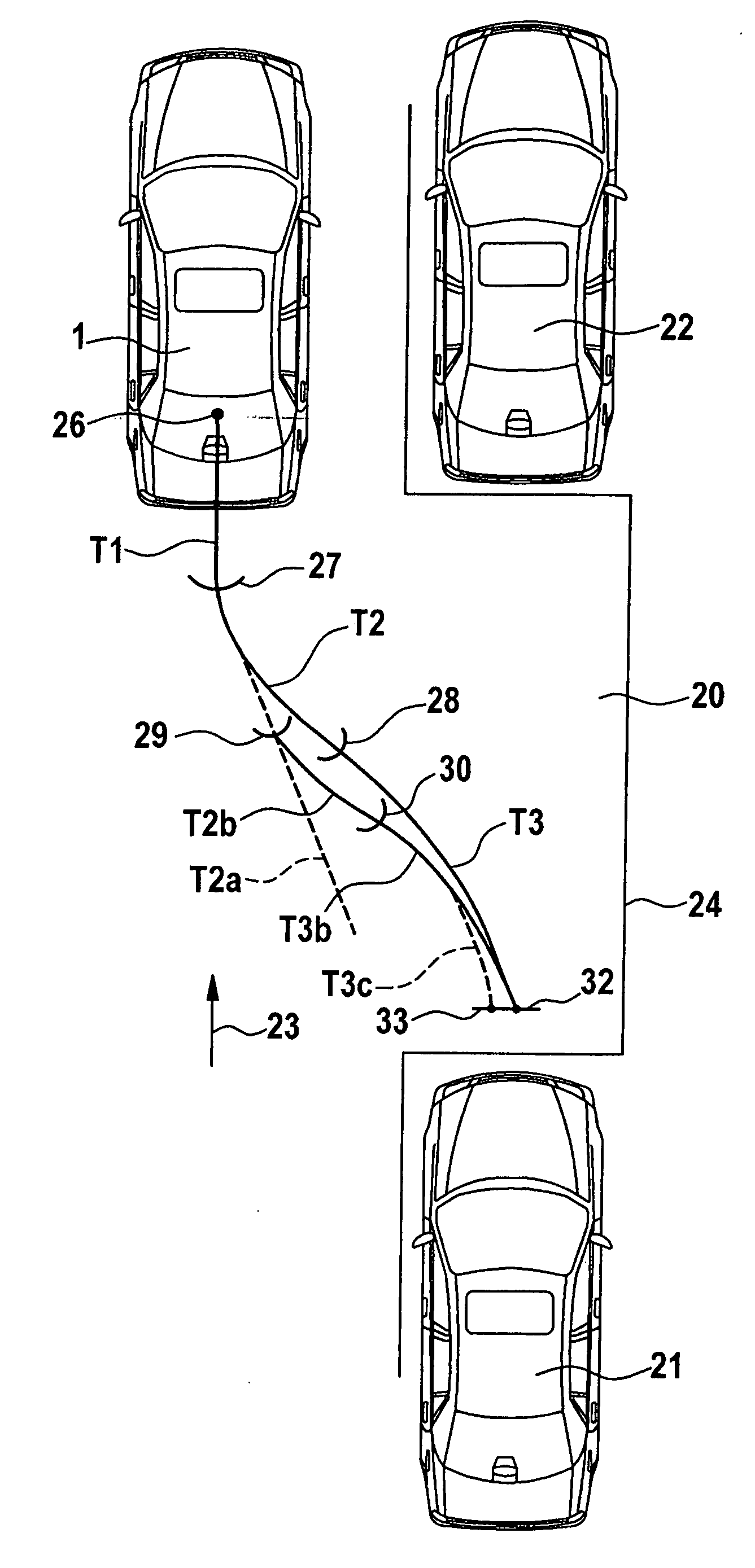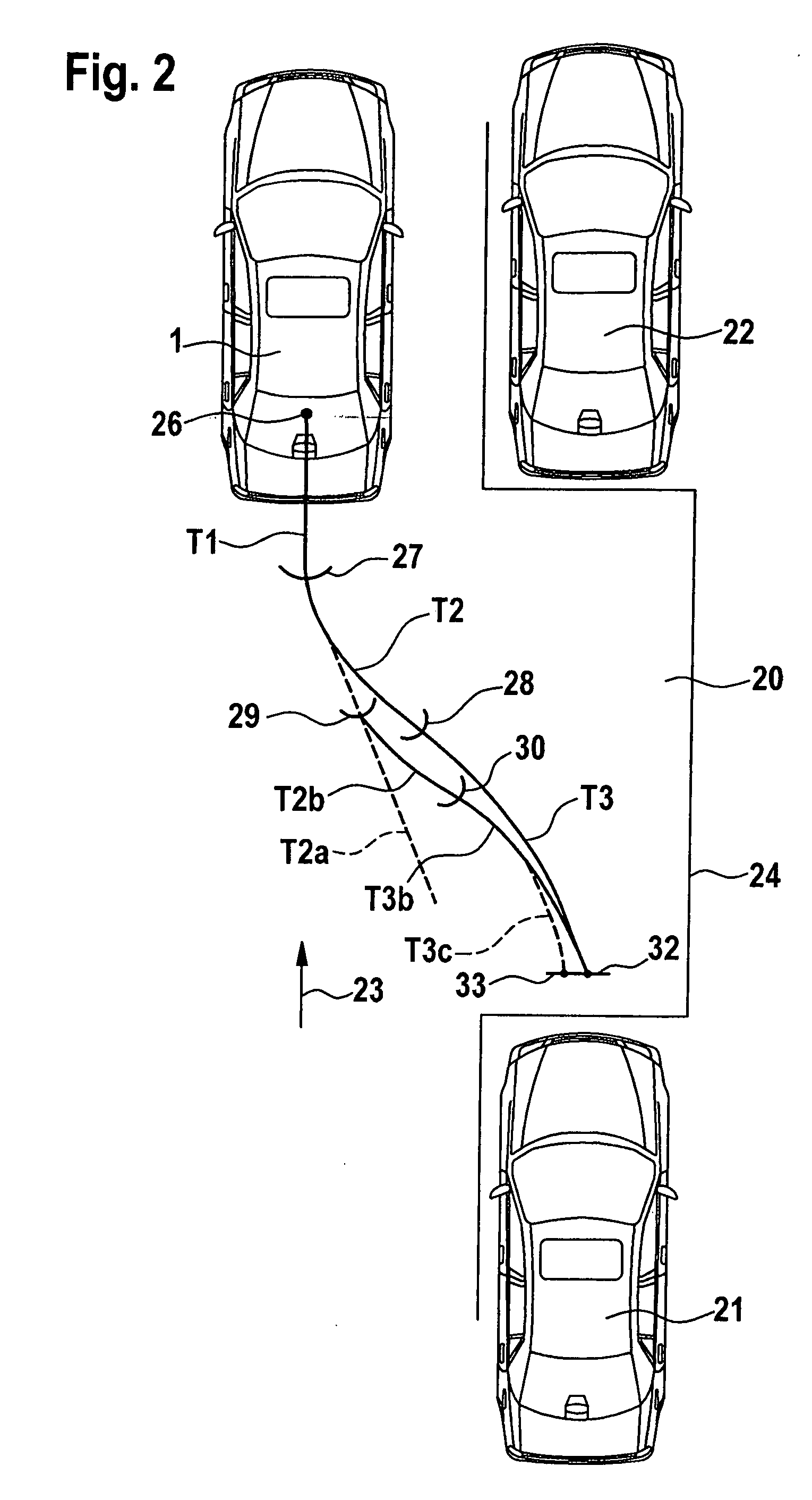Method and Device for Outputting Parking Instructions
a technology of parking instructions and instructions, applied in the direction of steering initiation, vessel parts, instruments, etc., can solve the problems of putting drivers' stress on drivers, not being able to facilitate parking, and increasing the amount of parking space availabl
- Summary
- Abstract
- Description
- Claims
- Application Information
AI Technical Summary
Benefits of technology
Problems solved by technology
Method used
Image
Examples
Embodiment Construction
[0037]Example embodiments of the present invention described below are applicable in particular to motor vehicles parking in parallel parking spaces situated laterally along a street. When parking in such parallel parking spaces in particular it is necessary first to make a first turn of the steering wheel, followed by a turn in the other direction. The calibration of these two turning points makes it particularly difficult for the driver to park in such parking spaces.
[0038]FIG. 1 schematically shows a vehicle having a device for outputting parking instructions according to an example embodiment of the present invention.
[0039]FIG. 1 schematically shows a motor vehicle 1. On a front side 2 of the vehicle, distance sensors 3 are situated. On a rear side 4 of the vehicle there are also situated distance sensors 5. On a left side 6 of the vehicle and on a right side 7 of the vehicle, distance sensors 8, 9 are also provided. The distance sensors measure distances to obstacles in the env...
PUM
 Login to View More
Login to View More Abstract
Description
Claims
Application Information
 Login to View More
Login to View More - R&D
- Intellectual Property
- Life Sciences
- Materials
- Tech Scout
- Unparalleled Data Quality
- Higher Quality Content
- 60% Fewer Hallucinations
Browse by: Latest US Patents, China's latest patents, Technical Efficacy Thesaurus, Application Domain, Technology Topic, Popular Technical Reports.
© 2025 PatSnap. All rights reserved.Legal|Privacy policy|Modern Slavery Act Transparency Statement|Sitemap|About US| Contact US: help@patsnap.com



